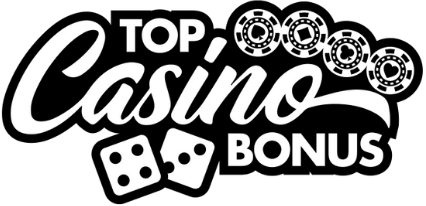How to use a blackjack strategy card correctly
You’d be surprised how many players think blackjack is about instinct or gut feeling. They sit down, toss their chips on the felt, and play based on what their “hunch” tells them. That’s how you bleed chips before you even warm the seat. Blackjack isn’t about guesswork, it’s a math game, and the house edge is small enough that if you know how to use a blackjack strategy card correctly, you’ve got a fighting chance.
Table of contents
The purpose behind the strategy card
First off, let’s clear this up, a blackjack strategy card isn’t cheating. It’s not a backdoor into the casino’s vault. It’s the product of decades of statistical simulation. These cards map out the mathematically correct move in every possible player-dealer card scenario. Stand, hit, double down, split, surrender, it’s all calculated to minimize your losses and maximize gains over time. Think of it as your personal blackjack command manual.
The common rookie pitfalls
Most greenhorns I watch at the tables misuse strategy cards in two main ways: either they forget to tailor their decisions to the rules of the specific table, or they misread what their hand actually is. There’s a massive difference between a “soft 17” and a “hard 17”, one’s forgiving, the other, not so much. Misreading that gets people into all sorts of unnecessary trouble.
Reading the card like a seasoned pro
Now let’s dig into how to interpret it the right way. You’ll usually find the player’s hands listed vertically on the left, everything from hard totals (like 8 through 17+) to soft hands and pairs. Across the top, you’ll see the dealer’s upcard, from 2 through ace.
Understand the logic, not just the letters
Each intersection tells you precisely what to do: H for hit, S for stand, D for double (or hit if not allowed), and P for split. That sounds easy, until you realize not all tables allow doubling after splitting or have the same surrender rules. If you’re not adjusting the chart for single-deck versus multi-deck, you’re playing blindfolded. Know the house rules inside-out before even unfolding that card.
The right way to apply it in real time
Having the card is useless without the confidence to use it. I’ve seen too many folks sheepishly glance and then second-guess it because the pit boss is looming or someone at the table gives them the stink eye. Don’t let ego or pressure override the science. That card has more wisdom than most folks betting at the table will ever hold.
Eyes up, decision sharp
Never stall or fumble with the card in the middle of a round. Memorize the common patterns before sitting down. If you need to double-check something, do it only when it’s your turn and quickly. After a while, you’ll rely on it less, just like learning the feel of perfect dough instead of using a recipe.
Advanced tips few talk about
Here’s where decades of grinding the felt pays off. Always track the dealer’s tendencies. A technically identical card might play differently depending on whether the dealer is aggressive with soft 17s or whether the table is beating them down. The baseline strategy is your foundation, but the real money flows when you read the rhythm of the game and modulate accordingly.
When not to follow the card
This won’t be in textbooks, but sometimes I’ll deviate based on deck tracking. If I’ve been watching and know the shoe is rich in high cards, I won’t play the standard way on a 16 vs. 10. I might surrender instead, even if the card says hit, or stand if house rules say I can’t surrender. That’s not rebellion, that’s mastery.
Organization is key, beyond the cards
It’s not just your strategy you need to tidy up. Your bankroll management ought to be just as refined. Use trusted online banking tools to stay in control, especially if you play online. Options like using Trustly Instabank help you get real-time transfers so your chips are ready when the odds are in your favor.
If you’re playing internationally, consider Skrill for global accessibility or lean on PayPal if you want extra buyer protection. Even prepaid options like Paysafecard are solid for keeping spending in check.
Discipline, the backbone of the strategy
This ain’t poker. You can’t bluff your way to a win in blackjack. Let me give you a snapshot from years back: I watched a guy in Vegas whittle down a $5,000 stake across two hours flat because he thought he was smarter than the card. Every bad decision snowballed. He stood when he should’ve hit, doubled down recklessly, and split 10s like he was tossing coins in a fountain. Strategy without discipline is noise.
The mental game matters
Don’t chase. Don’t tilt. Expect the losses, they’re part of the process. A single correct move might not win you the hand, but it’s one brick in a wall of mathematically sound play. Think long game, not lucky streak. That’s what separates a card shark from a card snack.
Sharpening your edge even further
If blackjack’s calling you deeper, study how to master specific decision trees under pressure. It’s not unlike breaking down pre-flop vs. post-flop tactics in poker. There are guides worth checking, like this detailed breakdown of how to play Ace-King properly. Understanding statistical advantage in any area of gaming sharpens critical thinking across the board.
Closing thought: respect the craft
Blackjack isn’t about chasing thrill, it’s about honoring a game rooted in structure, probability, and nerve. The strategy card is your compass, but it’s up to you to steer the ship. Don’t reduce it to a lucky charm tucked in your wallet. Study it, respect it, and apply it faithfully. Do that, and you won’t just survive at the table, you’ll thrive.





0 Comments